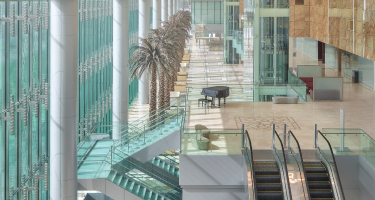What is percutaneous endoscopic gastrostomy (PEG)?
A PEG is a safe and effective way to provide food, liquids and medications (when appropriate) directly into the stomach. The procedure is done for patients who are having difficulty swallowing.
Why do I need to have this procedure?
Your physician has recommended that you have this procedure in order to maintain adequate nutrition.
What happens during the PEG procedure?
During the procedure, a physician places an endoscope (a long, thin, flexible instrument about 1/2 inch(1.27 centimeters) into your mouth. The endoscope is then advanced through your esophagus (the food pipe leading from your mouth into your stomach) and into your stomach. The endoscope is used to ensure correct positioning of the PEG tube (also called a feeding tube) in your stomach. The PEG tube rests in the stomach and exits through the skin of the abdomen.
The percutaneous endoscopic gastrostomy (PEG) tube provides nutrition for patients who are having difficulty swallowing. The internal bumper rests in the stomach, and the adapter exits through the skin of the abdomen.
Before the procedure
You will meet with a physician, dietitian and home care coordinator. They will review your history, discuss the procedure and answer any questions you might have.
Special conditions
Tell the physician if you have a lung or heart condition, a bleeding tendency or if you are allergic to any medications.
Medications
- If you have diabetes and use insulin, you may need to adjust the dosage of insulin the day of the test. Your primary physician will help you with this adjustment. Bring your diabetes medication with you so you can take it after the procedure.
- Tell your primary physician if you are taking blood-thinning medications such as Coumadin (warfarin), Persantine (dipyridamole) or Ticlid (ticlopidine hydrochloride). Your primary physician may prescribe an alternate method for thinning your blood before the procedure.
- Within 1 week before the procedure, do NOT take aspirin, products containing aspirin or anti-inflammatory drugs (such as ibuprofen including Advil or Motrin; Naprosyn or Indocin).
- Please note: Do not discontinue any medication without first consulting with your primary or referring physician.
Eating and drinking
Do not eat or drink anything for 8 hours before the procedure.
Transportation
You will need to bring a responsible adult to accompany you after the procedure. You should not drive or operate machinery for 24 hours. The medication given during the procedure may cause drowsiness, making it unsafe for you to drive or operate machinery.
Overnight accommodations
You may be asked to stay overnight at a location that is within 30 minutes from where your procedure was performed.
On the day of the procedure
You may need to stay overnight in the hospital after the procedure, so please pack any personal items that you may need.
You will meet with a physician who will explain the procedure in detail, including possible complications and side effects. The physician will also answer any questions you may have.
During the procedure
- You will be asked to wear a hospital gown and to remove your eyeglasses and/or dentures if you have them.
- The procedure is performed by a physician with experience in the PEG procedure.
- You are given a pain reliever and sedative intravenously (in your vein). You will feel relaxed and drowsy.
- You are given a local anesthetic (pain-relieving medication) at the site where the PEG tube is placed.
- The endoscopy physician inserts an endoscope through your mouth and into your stomach. The endoscope does not interfere with your breathing.
- Through the endoscope, your physician will view the stomach lining to determine the PEG tube insertion site.
- A small incision is made in the abdominal wall where the PEG tube will exit.
- The procedure lasts from 30 to 45 minutes.
After the procedure
- You will be observed closely for any complications.
- The PEG tube will be secured to your abdomen with tape.
- A responsible adult must accompany you after the procedure. Do not drive or operate machinery for 24 hours.
- You should expect to see some drainage around the PEG tube for the first 24 to 48 hours.
- A sterile gauze dressing will be placed around the incision. Your nurse will change the dressing as needed.
- Once the dressing has been removed and the area has healed, be sure to wash the area daily with soap and water.
- A dietitian will teach you how to use and care for your PEG tube, and you will be started on enteral tube feeding (feeding directly through the gastrointestinal tract).
- Your dietitian will help you choose a commercially prepared formula for the tube feeding.
- For a couple of days, you may have minor soreness in your abdomen where the PEG tube was inserted. This will feel like a pulled muscle. You will receive medication to help relieve this pain the first few days after the procedure.
- The amount of care needed for the PEG tube varies among patients. Generally, PEG tubes do not need to be replaced for several months, and may even function well for 2 or 3 years.
- If you are having difficulty with your PEG tube, please call your healthcare provider.
حقوق الطبع والنشر 2017 كليفلاند كلينك أبوظبي. الحقوق محفوظة.
هذه المعلومات مقدمة من كليفلاند كلينك أبوظبي، التابعة لمبادلة للرعاية الصحية، ولا يُقصد منها أن تحل محل المشورة الطبية المقدمة من طبيبك أو مقدم الرعاية الصحية. يرجى استشارة مقدم الرعاية الصحية الخاص بك للحصول على المشورة بشأن أي حالة طبية خاصة.

